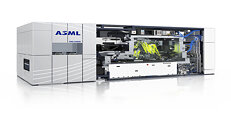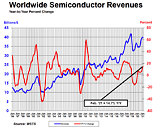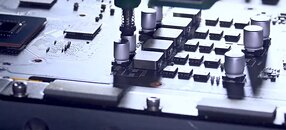
Marvell Introduces Industry's First 800G Multimode Electro-Optics Platform for Cloud Data Centers
Marvell (NASDAQ: MRVL) today announced the industry's first 800 Gbps or 8x 100 Gbps multimode platform solution, that enables data center infrastructure to achieve dramatically higher speeds for short-reach optical modules and Active Optical Cable (AOC) applications. As artificial intelligence (AI), machine learning (ML) and high-performance computing (HPC) applications continue to drive greater bandwidth requirements, cloud-optimized solutions are needed that can bring lower power, latency and cost to short-range data center interconnections. The new 800G platform, which includes Marvell's PAM4 DSP with a multimode transimpedance amplifier (TIA) and Driver, enables faster data center speeds scaling to 800 Gbps, using conventional cost-effective vertical-cavity surface-emitting laser (VCSEL) technology while accelerating time-to-market with plug-and-play deployment.
Today's data centers are packed with equipment utilizing optical modules or AOCs connected by multimode optical fiber optimized for communication over short distances within data centers. This 100G per lane multimode fiber provides cost-effective, low-power, short-reach connectivity. To support multi-gigabit transmissions, multimode architectures often use VCSEL transmitters, which offer the cost benefits of reliability, power efficiency and easy deployment.
Today's data centers are packed with equipment utilizing optical modules or AOCs connected by multimode optical fiber optimized for communication over short distances within data centers. This 100G per lane multimode fiber provides cost-effective, low-power, short-reach connectivity. To support multi-gigabit transmissions, multimode architectures often use VCSEL transmitters, which offer the cost benefits of reliability, power efficiency and easy deployment.






































